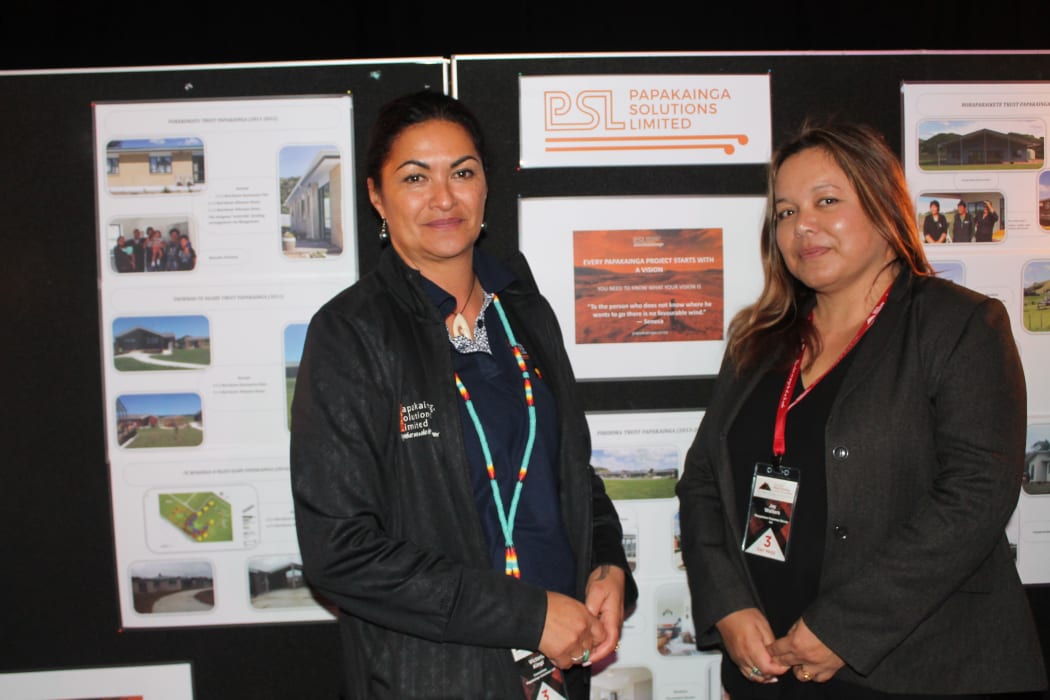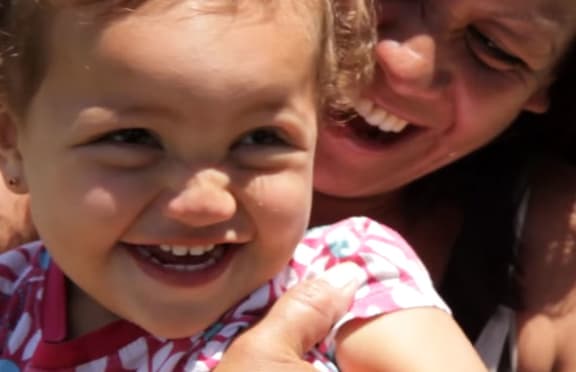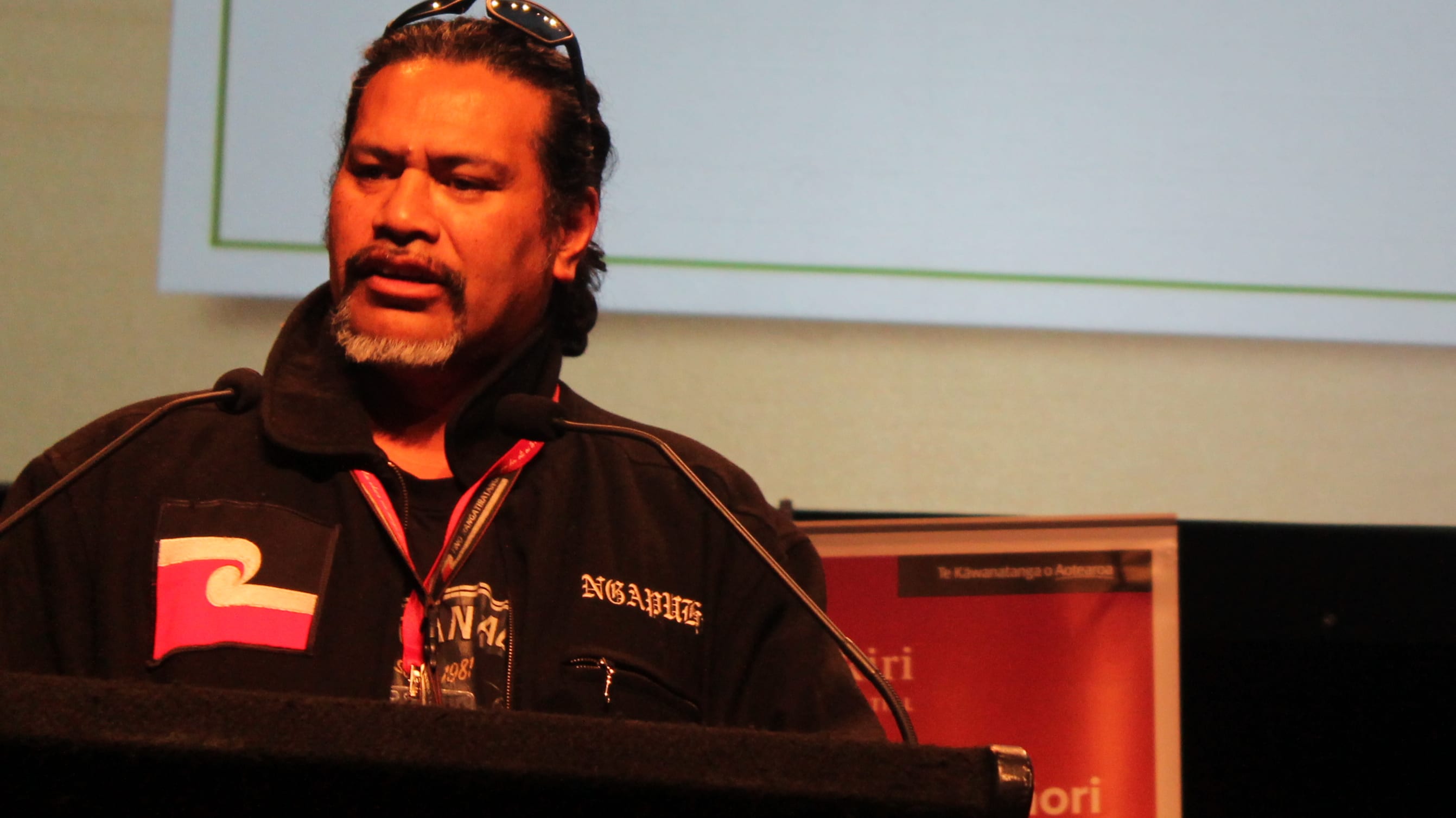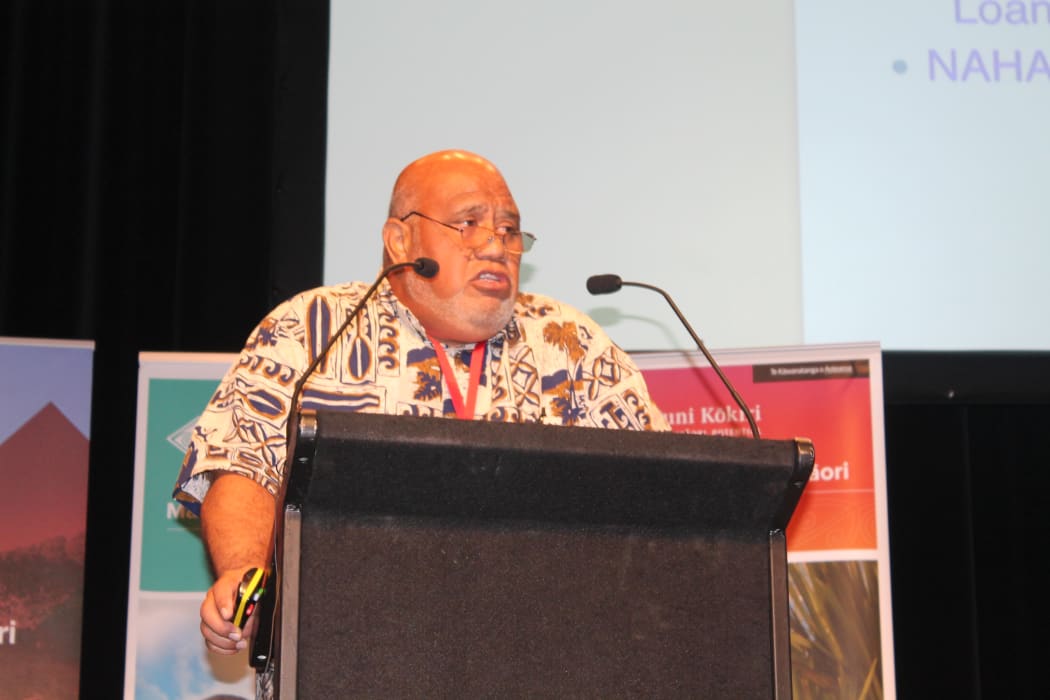Te Ahi Kaa meets a man who has lived in a whare uku - a home made of clay and rammed earth - for a decade, a man working for affordable housing in the Far North, and a woman working closely with Māori to establish Papakainga homes in Tauranga. Plus highlights from the recent National Māori Housing Conference in Tauranga.
The word Papakāinga describes a village, communal Māori land or original home.
As more Māori trusts and incorporations move towards self-sustainability, Papakāinga villages have seemingly slipped into second gear in the Bay of Plenty.
In 1989 Mangatawa Papakāinga built four one-bedroom kaumatua (retired or elderly persons') flats - today the area located below Mangatawa Hill, near Mount Maunganui, and Papamoa now boasts 36 homes suitable for kaumatua and large families.

Managing Director of Papakainga Solutions Limited Victoria Kingi and Jay Walters. Photo: RNZ/Justine Murray
Building the homes required stringent and transparent processes.
Project Manager Victoria Kingi has been at the frontline of Papakāinga housing and is Managing Director of Papakāinga Solutions Ltd. She says that in her experience whanau engagement is at the core of any housing project.
At this year’s National Housing Conference Victoria recalls a conference in Fremantle where a contractor talked about providing housing for an Aboriginal community, yet his company didn’t engage with the local people at all.
“We consulted with our kaumatua, of course, because their needs are important. And the houses we build reflect their needs”
Ricky Houghton is the CEO of He Korowai Trust in Kaitaia, which this year opened their affordable housing project to families of 17 adults and 43 children.

He Korowai Trust client Rachel Hutton with her daughter Photo: YouTube screenshot
Their housing scheme is more about social responsibility that just providing shelter. A weekly cost of under $200 covers rent and some groceries.
The project is also part of a rent-to-own scheme.
There are three rules the tenants must comply with - no drugs, alcohol or violence.
"In the next three months we will moving up another 10 homes for another 10 families that are living in some the most horrible living conditions. It's an opportunity for them to hop onto the bottom rung of home ownership. I’m excited about that” – Ricky Houghton.

Rueben Taipari is an advocate of Whare Uku and has lived in one for ten years. Photo: RNZ/Justine Murray
Reuben Taipari has lived in whare uku (sustainable fibre housing) with his family in Ahipara for a decade.
He says that this winter they didn’t need a heater. They don’t need air conditioning in the summer because of the thermal properties of the material.
In 2008 Rueben met with Dr Kepa Morgan, a civil engineer who had formed the idea of constructing whare uku in the late 1990s with alternative methods, They used dome housing in Canada as an example.
In Northland there are six whare uku and more dotted around the country.
Rueben ssays that the tikanga (protocols) of building the house has to also align with the taiao (environment).
He sees today’s housing problems as a red flag for Māori to return to their ancestral lands.
"Hoki ki te kainga, hoki ki te maunga. I believe that home is where the whenua is. Our whakapapa and our matauranga, it’s such a huge resource that nobody appreciates, And right now, as you can see with the lack of solutions that are out there delivered by government and pākeha services, we have to turn to solutions that do work for us. We used to be healthy, we used to be strong… I think we need to go back to understanding the teachings and mātauranga of our tupuna.”

Bob Hall of Aukai Pacific, Strategic Planning and Housing and Community Development Services. Photo: RNZ/Justine Murray
Bob Hall of Aukai Pacific is involved in strategic planning and housing and community development in Hawaii. He describes the housing growth and problems facing indigenous Hawaiians, one of which is an increase in homelessness because Hawaii has good weather all year round.
"Condeminiums is what Hawaii is going to be using to address it's affordable housing issue. You can't go horizontal anymore, there's hardly any more land. So everything is going vertical, everything is going high-rise. Hawaii is at a 40 storeys limit. More and more buildings are going up."

